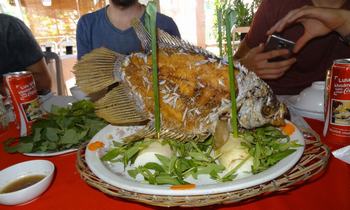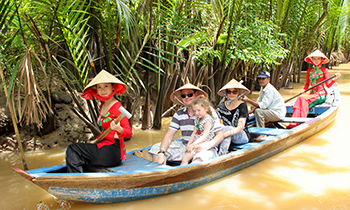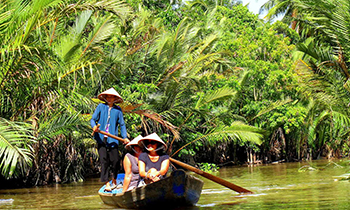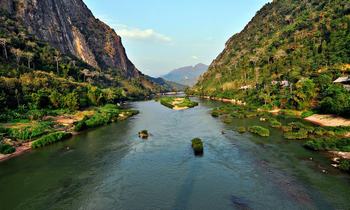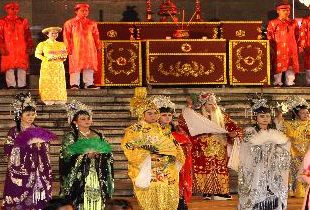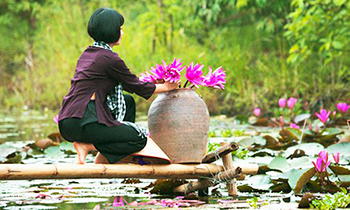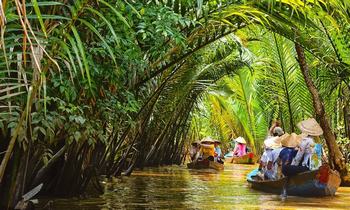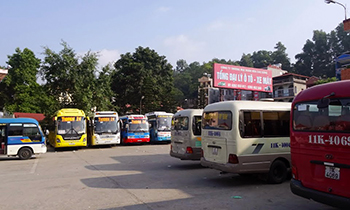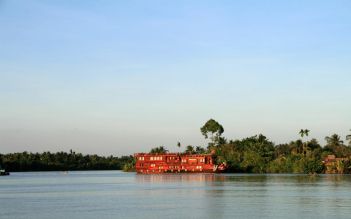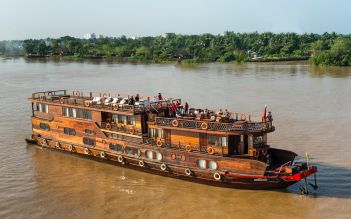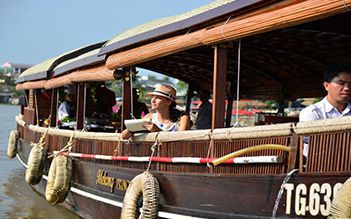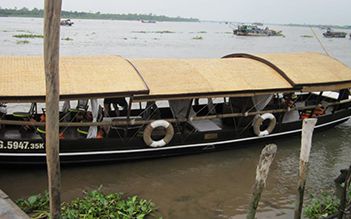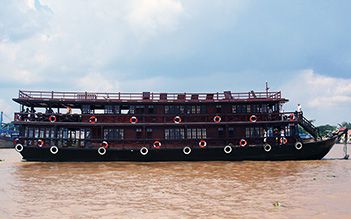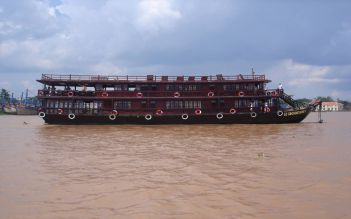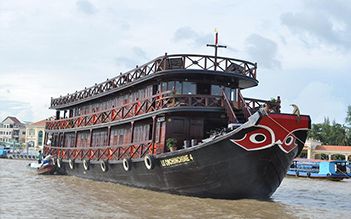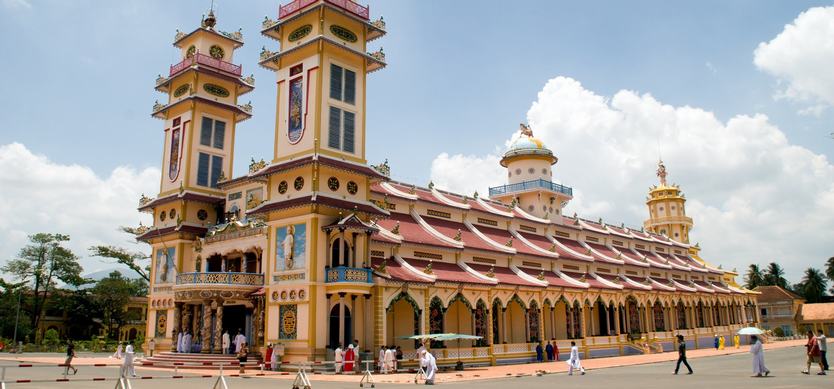
A memorable trip to Cao Dai Great Temple
Cao Dai is an attempt to create a perfect synthesis of world religions. It is a combination of Christianity, Buddhism, Islam, Confucianism, Hinduism, Geniism, and Taoism. Almost of Mekong Delta tours or Mekong Delta boat tour includes Cao Dai temple in the itinerary, so you will have the chance to visit the great temple by booking it.
An overview of Cao Dai temple
Established in the Southern regions of Vietnam in the early 1920s, the religion was officially codified in 1926. The functioning center of Cao Daism is located in the Tay Ninh province. Cao Dai literally means high tower or palace, a metaphor for the spender of spiritual growth. The central philosophy of Cao Daism pertains to the duty that the faithful perform for themselves, their family, society and the world at large. Much like Confucianism, this element of the Philosophy pertains to how the individual functions within the context of the community.
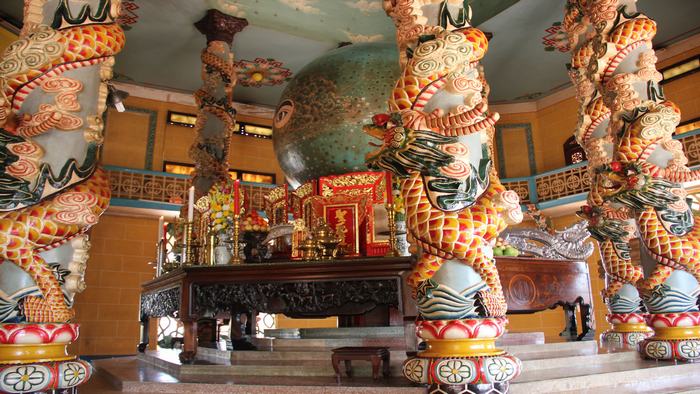
The interior of the temple
The impressive architecture of the temple
The structure of the nine-story Cao Dai Temple is part pagoda, part cathedral, part mosque – representing the ideology behind the religion. The exterior – fluorescent shades of pinks and yellows, rococo walls and mosaic-mirrored tiles that glint in the sun seems to find their delicate balance in the chaos. To its top off, the exterior that is already a feast for the eyes, are further ‘accessorized’ with multi-colored dragons of all shapes and sizes. Above the main entrance is the all-seeing Holy Eye, the symbol of the Cao Dai sect. The interior, needless to say, is just as engaging as statues of Jesus Christ, Buddha and the Hindu god, Brahma, stand side by side.
The interior is just as engaging as statues of Jesus Christ, Buddha and the Hindu god, Brahma, stand side by side
The three principal colors of Cao Dai are yellow (for Buddhism), blue (for Taoism), and red (for Christianity), and these appear in worshippers’ robes as well as the temple. The most important symbol is the Divine Eye, representing God, which also appears in followers’ homes. It is a left eye, because God is Yang, and Yang is the left side. It has a ying-yang symbol in the pupil.
Within the temple, males must enter on the right and females to the left and shoes have to be removed before entering the massive main hall. Once you step into the temple, you seem to be removed from the hassle and bustle of the outside world and placed into a world of calmness, peace, and light.
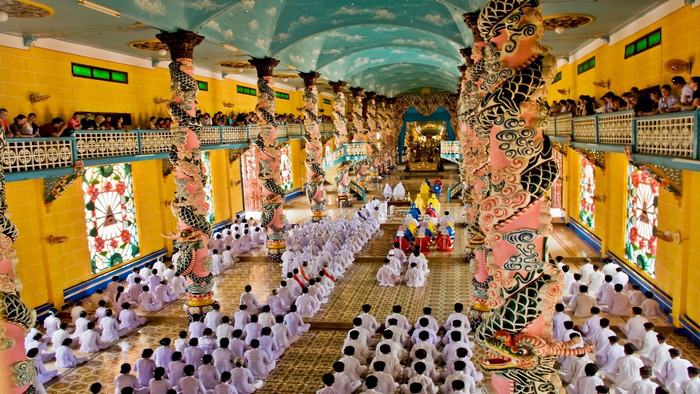
Cao Dai Temple
Services are held four times a day and visitors are welcomed to watch from the balcony above which runs the entire length of the cathedral. Rows and rows of gracefully attired devotees dressed in white stroll into the hall systematically, accompanied by the sounds of the gong. As if on cue, once inside the hall, the devotees kneel down together before the altar signaling the start of the prayers. The priests are easily identified by their white pointy hats decorated with the holy eye and are dressed in either red, blue or yellow flowing robes. The gongs are now joined in by the string instruments and harmonious chanting of the devotees. Photography is allowed here and is an excellent opportunity not to be missed as you will never find another moment like this anywhere else.
With the amazing structure and the spiritual meaning, Cao Dai Temple is worth visiting when traveling to Mekong Delta. There are also a ton of exciting things you can explore there. Visit our website to get further information. If you find this article useful, please share with others. Thank you!

